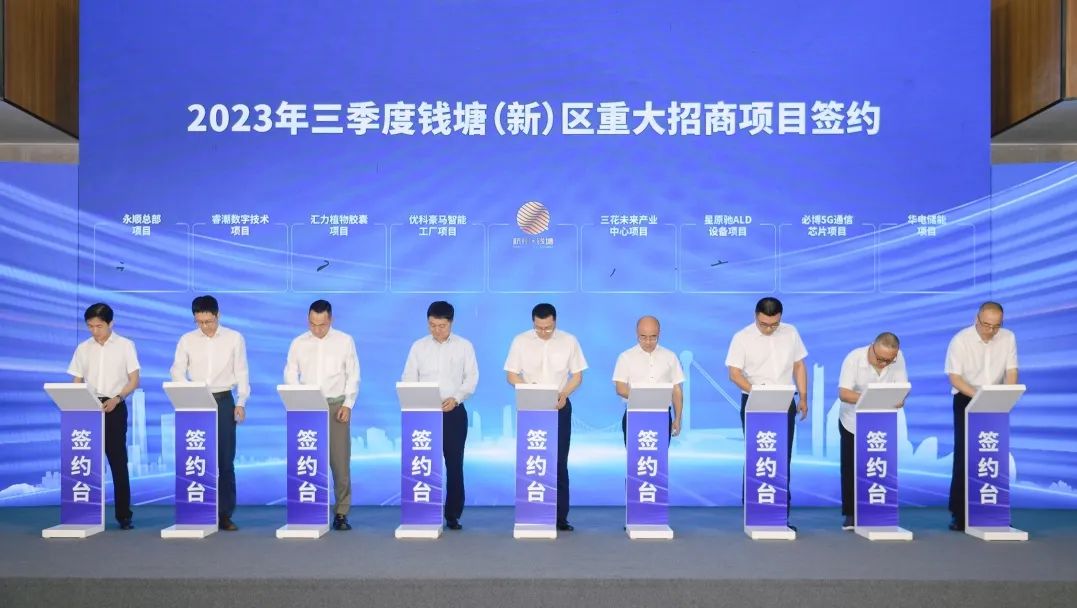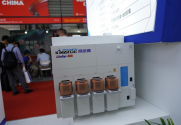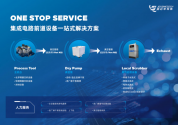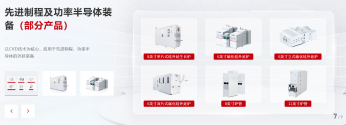Hangzhou Qiantang District signed a number of semiconductor projects, including Xingyuanchi Semiconductor, Bingbo Semiconductor, etc.
According to news from Jiwei.com, recently, in the third quarter of 2023, the "Double Ten Billion" major investment promotion project signing ceremony and the intensive start-up of key industrial projects in Qiantang (New) District, Hangzhou City, Zhejiang Province were held. At the meeting, 8 major investment projects with a cumulative total investment of 11.1 billion yuan were signed, and 10 key industrial projects with a cumulative total investment of 10.6 billion yuan started construction.

Some signed projects:
Xingyuanchi ALD atomic layer deposition equipment project
The investor of the project, Hangzhou Xingyuanchi Semiconductor Co., Ltd. is a design and manufacturer of ALD atomic layer deposition (vacuum precision coating) equipment for semiconductors, high-definition displays and advanced optics. The company's headquarters and future listing entities have settled in Qiantang. Its main product is ALD atomic layer deposition equipment. The project plans to invest a total of 1.6 billion yuan, including 448 million yuan in fixed assets and 726 million yuan in research and development.
Bibo Semiconductor Headquarters and 5G Communication Chip Project
Hangzhou Bibo Semiconductor Co., Ltd., the investor of the project, is committed to the research and development of key core chips and platform technologies for 5G communications such as the Internet of Things, Internet of Vehicles, and low-orbit satellites. The project starts from the simplified 5G (RedCap R17) IoT chip with high threshold. It is planned to complete the RF test chip engineering batch tape-out and FPGA field test in the second half of this year. The first batch of chips will be applied to smart grid, security, industrial control, etc. Application scenarios. The project has set up the company headquarters and future listed entities in Qiantang, with a planned total investment of 770 million yuan, and will carry out the research and development and design of 5G communication chips.
Zhejiang Ruichao Digital Technology Project
The investor of the project, Zhongruixin Digital Technology Co., Ltd., is a high-tech enterprise with heavy asset investment as its core business. The project is a digital economy industry project with a planned total investment of 450 million yuan, including 131 million yuan in research and development and 100 million yuan in fixed investment. The project will provide the government with a full range of IT nanny services and digital asset operation services through franchising, purchasing services and other modes, provide enterprises with a complete set of digital transformation solutions and operational application innovation, and provide residents with multi-scenario socialized operational services. Helping the transformation and upgrading of the digital government and the "smart digital transformation" of the industry.
Some start-up projects:
Qiantang Core Science and Technology Park Phase II Project
The project is located in Qiantang Xingu, east to Qingdong 2nd Road, south to Hangzhou Yibang Spandex Co., Ltd., Hangzhou Liangdahong Packaging Technology Co., Ltd., west to Hangzhou Tuobang Curtain Wall Technology Co., Ltd., Hangzhou Zhongyi Runyuan Industrial Co., Ltd. , north to Jiangdong Fifth Road. The total investment of the project is 1.608 billion yuan, the total land area is about 87,000 square meters, and the total construction area is about 247,400 square meters. It will build 9 high-rise factory buildings, 11 multi-storey factory buildings, 1 supporting building and an opening and closing office. The construction period of the project is 2023-2026, and the planned investment in 2023 is 50 million yuan.
KONE high-end transmission equipment intelligent manufacturing project
The project is located in Qianjin Intelligent Manufacturing Park, east to the planned greening of Qianjin Avenue, west to the planned greening of Dongwu River, and north to the planned greening of Dongwu River. The total investment of the project is 350 million yuan, the total land area is about 40,000 square meters, and the total construction area is about 124,000 square meters. It is planned to build 1 workshop and 1 comprehensive building, of which the comprehensive building includes R&D workshops and staff dormitories. The construction period of the project is 2023-2026, and the planned investment in 2023 is 80 million yuan.






